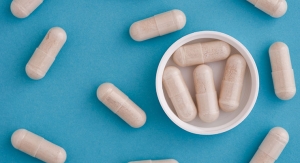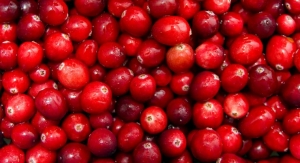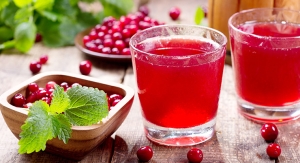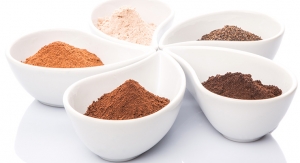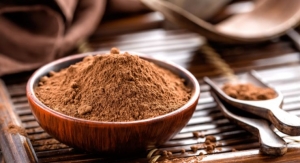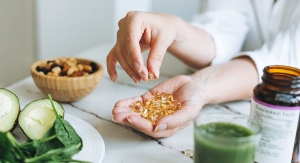Julian Mellentin, Editor, New-Nutrition Business11.01.12
Alongside taste, convenience and value, health is one of the key drivers in the food and beverage industry. Companies can’t ignore consumer desires for foods that are “as natural as possible”—which is one consumer-driven definition of healthy—low in calories or sugar, high in fruit or free from gluten.
This concept is why the term “functional foods” has outlived its usefulness; it is one of those industry-driven terms that doesn’t mean anything to consumers, who tend to write things like “yogurt” or “fruit” on their weekly shopping list—not “functional foods.” The phrase also has no legal or regulatory status.
Consumers don’t care whether foods have a special added ingredient that provides the health benefit. In fact, they’d prefer the health benefit to come from some “natural and intrinsic” value of the food. People still want added benefits, provided they are clear and tangible.
A review of “functional foods” really means a review of key developments in the marketing of health benefits—of all kinds. Two beverage categories that are growing strongest illustrate the very different ways consumers can approach health. Both are categories that in the past have been dismissed as fads rather than trends.
Naturally healthy: Vita Coco, the leader in the U.S. coconut water market—offering the benefit of hydration with isotonic properties to match conventional formulated sports drinks, but as an intrinsic benefit of coconut water—has recorded another year of 100% growth, which means that sales must be at or above the $200 million market at retail. Not bad for a brand that’s only five-years-old.
Energy: By contrast, energy drinks are all about delivering a kick with caffeine and amino acids. Nothing, you might think, could be further from coconut water. But energy drink sales are continuing to grow even while they sell at super-premium prices. Energy drinks continue to show their “feel the benefit” advantage—the marketing power of delivering tangible effects.
The quick shot of stimulation from the 75 mg of caffeine in the average energy drink has helped grow the business from almost zero outside Asia in the 1980s to a retail sales value of more than $37 billion (€28 billion) in 2011, according to drinks consultancy Zenith. Energy drinks continue to show that their tangible benefit, their excellent marketing and alternative distribution channels (only 40% of the market is through supermarkets) are a recession-proof mixture, with sales up 12% in 2012.
Interestingly, private label has also managed to take just 5% market share. In an environment where retailers are determined to increase the percentage of their private label sales, it’s a rare category that holds the retail brands at bay, but it’s also a reminder of the power of well-marketed brands to defend a category from private label competition. The biggest energy success is 5-Hour Energy, which created the energy-shots segment in the U.S., grew it to $1 billion in retail sales in six years and still holds a 75% share.
Protein’s Tipping Point?
An example of how a “naturally healthy” food can lead to fresh opportunities can be seen with Greek yogurt. In just four years, start-up company Chobani has achieved what much larger companies have spent more than a decade trying to do: create awareness of protein in the mass market. The most important fact that everyone in industry has learned from the experience—or rather re-learned—is that taste, texture and pleasure (more than health benefits) made it happen.
Every single supplier of protein has a PowerPoint slide that spells out their ambition to move protein from its current core market of body builders and hard-core sports people, into the mass market.
Exactly how to win more mainstream acceptance for protein-fortified foods and beverages was a problem no one had solved until Hamdi Ulukaya came along. Mr. Ulukaya, a Turkish immigrant to America whose family had been cheese-makers back home in Turkey for generations, launched yogurt brand Chobani, which rocketed from zero to $1 billion in retail sales in just four years.
Its thick, satisfying texture was something new to American consumers, and those benefits came from Greek yogurt’s naturally high protein content: 15 grams per 100 grams. The presence of protein is a selling point to a small but increasing number of consumers. Greek yogurt has been successful because it tastes fantastic; protein is a secondary benefit. The other health element is that in America Greek yogurt is low- or zero-fat, which is something unknown in Europe.
Chobani and other brands have helped raise awareness of protein among a wider audience. Protein’s image as a valuable part of a healthy diet that helps people manage weight has received several boosts, most recently in November 2010 following publicity of results published in the New England Journal of Medicine on the world’s largest diet study.
The large-scale, randomized study, called Diogenes, investigated the optimum diet composition for preventing and treating obesity. The study was conducted by eight European research centers and headed by Thomas Meinert Larsen, PhD, and Professor Arne Astrup, head of the nutrition department at the Faculty of Life Sciences (LIFE), University of Copenhagen. The project was funded by an EU grant of $11 million (€14.5 million).
The researchers found that high-protein, low-glycemic index (GI) diets were the most effective for weight management (see Table 1). The study is already impacting the world of nutrition, consumer beliefs and consumer communications.

Kellogg’s Special K breakfast cereal, the world’s largest weight management food brand, communicates about Diogenes on its Australian website, while the U.K.’s biggest weight loss program, “Slimming World,” has switched to recommending low-fat, high-protein dairy in all its recipes.
Consumer knowledge about protein is also advancing. In Finland, Valio Dairy, an innovative group whose health ingredients can be found in products in 32 countries, found in a survey of 1,000 consumers that 70% were either paying attention to the levels of protein in their diet or wanted to include more protein in their diet.
Before the survey, Valio was already aware that protein was a nutrient of growing interest to consumers, however, it was surprised about the extent of this interest. “I thought: ‘I can’t believe this, it cannot be true,’” said Taru Pilvi, vice president, Blue Ocean, at Valio.
In response, Valio developed PROfeel, a high-protein dairy range designed to appeal not to committed athletes and body builders but to the wider population. “We have found there is a big need for products like this,” Ms. Pilvi said. “We have seen people’s consumption patterns shift toward products which contain high amounts of protein naturally. But cottage cheese gets kind of boring. So there is a need, which has not been fulfilled.”
It’s not just dairy that can be a credible way to deliver protein in a good-tasting form. Fast-growing and innovative juice beverage start-up FRS Company, whose sales recently passed the $50 million mark, sees the “sweet spot” of consumers for its high protein fruit drinks between what chief marketing officer Matt Kohler described as “the typical energy-drink consumer” and “hard-core athletes.”
FRS customers are “healthy and active,” he said, evenly split between men and women. These consumers’ shopping baskets might also include nuts, yogurt and soy milk. “They’re concerned about the things they put in their bodies and are willing to pay more for those kinds of things,” Mr. Kohler added.
Convenience: The ‘Killer App’
While consumers seek “all-natural” foods, they also value convenience. Quaker Oats may have had the benefit of an FDA-approved cholesterol-lowering health claim since 1998, but in recent years that clear health claim has been of little advantage.
Sales of Quaker oatmeal fell 5% for the 52 weeks ended May 13, 2012, according to SymphonyIRI data, representing the fifth consecutive year of decline, despite repeated new marketing campaigns and a strong cholesterol-lowering health claim. Quaker has lost the advantage of being “naturally healthy” because it has failed to innovate in product formats.
Here are some oat-centered healthy product innovations:
Since the late 1990s Sweden-based Ceba Foods has been steadily growing its Oatly brand, a range of oat-based milks, cream, ice cream, smoothies and other products marketed as lactose-free, dairy-free and soy-fee. Products are based on oats with a high beta-glucan content.
In Finland, Bioferme, a family-owned company, created the first-ever probiotic oat yogurt more than 10 years ago. Marketed under the brand name Yosa, it’s lactose-free and low-sugar credentials have helped make it into a very successful niche brand with sales of €5 million per year, despite almost no marketing or advertising, in a country of just 5 million people.
Raisio’sElovena brand is the biggest oat brand in Finland. The brand was extended into a “liquid breakfast” format in 2008 with the launch of Elovena oat drink, which rapidly became a success. Elovena is a blend of oats, water and fruits that provide 30% of the Recommended Daily Allowance (RDA) of fiber per 250 ml serving. The brand was extended with the launch of Elovena Plus Benecol Oat Drink, which includes enough plant stanol esters to have a cholesterol-lowering effect. It connects to the high level of consumer association between oats and cholesterol lowering.
In the U.K., Moma Foods’ready-to-eat breakfast, blended from oats, probiotic yogurt and fruit, is a high-growth start-up success and a perfect example of category convergence at breakfast, with a brand that’s neither probiotic yogurt nor breakfast cereal, but a healthy combination of both.
Commercializing Science in a Crowded Market
The economic downturn, coupled with an over-supply of new health ingredients, is intensifying competition in the ingredient market. This in turn is leading to some more creative approaches to commercializing new nutrition science.
Ingredient companies target branded goods companies. First they must get the attention of new product development or R&D teams that are pressed for time and short on resources. Getting their attention long enough to convince them about what your ingredient does and how it gives value to a finished product can be a significant achievement by itself.
You might be asked several times to present your science and answer technical questions, but then there’s often a long silence while the potential customer internally processes what to do with the ingredient you are offering.
Many ingredient companies invest millions of dollars to develop science, to make their ingredient as process-friendly and as compatible with other ingredients as possible, only to find the entire commercial prospects of their ingredient rest on a decision by a marketer who may have no technical or scientific training.
The problem is that ingredient companies and marketers do not speak the same language. Often ingredient companies cannot show what consumer needs their ingredient satisfies or offer any other consumer insight. Still, a handful of far-sighted ingredient companies are taking a completely fresh approach. Nothing is as compelling as having a concept that has already been turned into a finished product that is consumer-tested and successful in the market. It’s a “proof of concept” that even the most conservative marketer can’t ignore.
Probiotic supplier Ganeden Biotech has done just this. Instead of persuading a brand owner to include its probiotics in its yogurt brand, Ganeden cut out the middleman and worked directly with a retailer (Wal-Mart) to develop and market a finished, branded, consumer-ready product.
Ganeden worked with a co-packer to produce the type of yogurt Wal-Mart was looking for and then offered the retailer exclusive rights to the finished product, which is sold under the brand name enLiven. The model makes good sense; getting its ingredients into Wal-Mart creates credibility for Ganeden that will make it easier to open doors elsewhere.
The strategy appears to be working. Launched in March of 2011, now Wal-Mart is expanding the range. Although the retailer never discloses sales figures, this suggests that enLiven is working well enough.
Ganeden’s launch of enLiven is part of an increasingly common strategy by suppliers to conceive and develop finished products in order to build awareness and trust for their scientifically-based ingredients and to demonstrate “proof of concept.” With that proof, it’s harder for brand managers to turn you down. In the future, more health ingredients could bypass the branded food companies and go straight into supermarket private-label brands.
Successful innovation is, of course, dependent on far more than just an ingredient. Creating new markets for new ingredients is critically dependent on innovating in as many ways as possible, including packaging, merchandising and brands and marketing tactics.
As a result, ingredient suppliers will increasingly find that, in order to differentiate themselves, they will have to deliver a full service that addresses not just the ingredient, but also how it should be packaged, what should be on the product label, how it should be marketed and much more.
This type of thinking is a discipline that will help suppliers develop a much more coherent and credible message when presenting to prospective business partners. Ingredient companies are increasingly going to be market experts, branding experts, communications experts and consumer insight experts, as well as technology experts. The ingredient companies that do this first will gain the competitive advantage.
Calcium’s Digestive Benefit
While Ganeden may have once had difficulty persuading yogurt marketers to try its probiotic, in Europe the problem was much worse. There the health claim regulator, the European Food Safety Authority (EFSA), has applied tougher-than-pharmaceutical standards and effectively outlawed probiotic products from making health claims.
However, at the same time, EFSA approved a health claim allowing products that provide 15% of the RDA of calcium per 100 grams to state that “Calcium contributes to the normal function of digestive enzymes.”
This unexpected approval by an exacting regulator has created opportunity for a range of products containing calcium, including dairy. The first company to take real advantage of this opportunity has been Arla, Europe’s biggest dairy group, which is using the health claim for calcium to communicate the digestive health advantages of a new product containing probiotics.
Arla Wellness is a new range of spoonable and drinkable yogurts, and milks introduced in Sweden in September. Arla Wellness Balance is marketed with the message “helps keep your stomach in balance.” It contains a combination of three active bacteria: Lactobacillus casei F19—Arla’s own patented strain that has been shown to survive the entire gastrointestinal tract—Lactobacillus acidophilus LA-5 and Bifidobacterium lactis BB-12. The last of these is an increasingly widely used, clinically proven bacteria from Danish cultures giant Chr. Hansen.
However, health claims based on probiotics are not allowed; instead, Arla is claiming the digestive health benefit as being from calcium, as permitted by the approved claim. Arla demonstrates how with an intelligent, creative and, above all, entirely legal and reasonable use of an approved health claim, there need be no barrier to launching a health brand.
The Blood-Sugar Dialogue
Diabetes has been identified as one of the biggest pubic health issues of the next decade, but the challenge has been how to market products without simply making them medical foods. A possible future direction developed this year from ConAgra’s petition for a qualified health claim linking whole grain consumption and reduced risk of Type 2 diabetes. The action comes at a point when mainstream food and beverage brands in the U.S. are beginning to appeal more explicitly to Type 2 diabetes sufferers and pre-diabetics in positioning and marketing some of their products.
Ingredion, which produces Hi-maize resistant corn starch as a fiber-rich ingredient that facilitates low blood-sugar levels, has been investing in helping companies understand how to talk to consumers about blood-sugar levels.
“Positioning and receptivity changes as market interest changes,” said Rhonda Witwer, senior business development manager of nutrition for Ingredion. “We see interest in messages about diabetes prevention getting stronger and stronger. And customers are more and more aware of it and looking at it much more seriously than before. The environment supports it.”
According to Ingredion’s proprietary research, as many as 40% of American consumers said that, “Helps maintain blood-sugar levels” is an extremely important or very important label claim. “That’s especially significant,” Ms. Witwer maintained, “because there isn’t a very high number of product labels that carry that claim; so far, not many are promoting it. Consumers aren’t hearing it a lot, but they’re grabbing onto it anyway. The number who are is comparable to those who think discussion of cholesterol levels in product labels is important.”
Americans who believe blood-sugar information on labels is important can be categorized into three basic groups, Ms. Witwer said: the older population, which is most likely to be diabetic and dealing with other conditions of aging health; “activists,” who are younger and interested in a variety of health messages; and weight-watchers, who are relying on management of carbohydrates to govern their diets.
However, Ms. Witwer recommended that brands stop short of making explicit connections between their products and diabetes. “If a healthy-blood-sugar claim gives you an easy-to-understand message that consumers gravitate to, why put it on a scary medical-sounding label?” she offered. “You don’t need to put a medical diagnosis on it. It has to be friendly and easy to understand.”
“We suggest language like, ‘Helps maintain blood-sugar levels as part of a high-fiber diet,’ and aim at people who are still healthy,” she continued. “They may indeed be pre-diabetic, but they’re still healthy people. And ‘pre-diabetic’ hasn’t been defined as a medical condition at this point. Yes, you could target diabetics, but the real opportunity is how to keep people healthy in terms of their blood-sugar levels. And there is very strong scientific evidence to support what we’re saying. So that’s what’s emerging.”
About the author: Julian Mellentin is an expert on the business of functional foods, who has been involved in this area for nearly 20 years. He is also the editor of New Nutrition Business, a long-established international journal covering the global nutrition business. He can be reached at julian.mellentin@new-nutrition.com; Website: www.new-nutrition.com.
This concept is why the term “functional foods” has outlived its usefulness; it is one of those industry-driven terms that doesn’t mean anything to consumers, who tend to write things like “yogurt” or “fruit” on their weekly shopping list—not “functional foods.” The phrase also has no legal or regulatory status.
Consumers don’t care whether foods have a special added ingredient that provides the health benefit. In fact, they’d prefer the health benefit to come from some “natural and intrinsic” value of the food. People still want added benefits, provided they are clear and tangible.
A review of “functional foods” really means a review of key developments in the marketing of health benefits—of all kinds. Two beverage categories that are growing strongest illustrate the very different ways consumers can approach health. Both are categories that in the past have been dismissed as fads rather than trends.
Naturally healthy: Vita Coco, the leader in the U.S. coconut water market—offering the benefit of hydration with isotonic properties to match conventional formulated sports drinks, but as an intrinsic benefit of coconut water—has recorded another year of 100% growth, which means that sales must be at or above the $200 million market at retail. Not bad for a brand that’s only five-years-old.
Energy: By contrast, energy drinks are all about delivering a kick with caffeine and amino acids. Nothing, you might think, could be further from coconut water. But energy drink sales are continuing to grow even while they sell at super-premium prices. Energy drinks continue to show their “feel the benefit” advantage—the marketing power of delivering tangible effects.
The quick shot of stimulation from the 75 mg of caffeine in the average energy drink has helped grow the business from almost zero outside Asia in the 1980s to a retail sales value of more than $37 billion (€28 billion) in 2011, according to drinks consultancy Zenith. Energy drinks continue to show that their tangible benefit, their excellent marketing and alternative distribution channels (only 40% of the market is through supermarkets) are a recession-proof mixture, with sales up 12% in 2012.
Interestingly, private label has also managed to take just 5% market share. In an environment where retailers are determined to increase the percentage of their private label sales, it’s a rare category that holds the retail brands at bay, but it’s also a reminder of the power of well-marketed brands to defend a category from private label competition. The biggest energy success is 5-Hour Energy, which created the energy-shots segment in the U.S., grew it to $1 billion in retail sales in six years and still holds a 75% share.
Protein’s Tipping Point?
An example of how a “naturally healthy” food can lead to fresh opportunities can be seen with Greek yogurt. In just four years, start-up company Chobani has achieved what much larger companies have spent more than a decade trying to do: create awareness of protein in the mass market. The most important fact that everyone in industry has learned from the experience—or rather re-learned—is that taste, texture and pleasure (more than health benefits) made it happen.
Every single supplier of protein has a PowerPoint slide that spells out their ambition to move protein from its current core market of body builders and hard-core sports people, into the mass market.
Exactly how to win more mainstream acceptance for protein-fortified foods and beverages was a problem no one had solved until Hamdi Ulukaya came along. Mr. Ulukaya, a Turkish immigrant to America whose family had been cheese-makers back home in Turkey for generations, launched yogurt brand Chobani, which rocketed from zero to $1 billion in retail sales in just four years.
Its thick, satisfying texture was something new to American consumers, and those benefits came from Greek yogurt’s naturally high protein content: 15 grams per 100 grams. The presence of protein is a selling point to a small but increasing number of consumers. Greek yogurt has been successful because it tastes fantastic; protein is a secondary benefit. The other health element is that in America Greek yogurt is low- or zero-fat, which is something unknown in Europe.
Chobani and other brands have helped raise awareness of protein among a wider audience. Protein’s image as a valuable part of a healthy diet that helps people manage weight has received several boosts, most recently in November 2010 following publicity of results published in the New England Journal of Medicine on the world’s largest diet study.
The large-scale, randomized study, called Diogenes, investigated the optimum diet composition for preventing and treating obesity. The study was conducted by eight European research centers and headed by Thomas Meinert Larsen, PhD, and Professor Arne Astrup, head of the nutrition department at the Faculty of Life Sciences (LIFE), University of Copenhagen. The project was funded by an EU grant of $11 million (€14.5 million).
The researchers found that high-protein, low-glycemic index (GI) diets were the most effective for weight management (see Table 1). The study is already impacting the world of nutrition, consumer beliefs and consumer communications.
Kellogg’s Special K breakfast cereal, the world’s largest weight management food brand, communicates about Diogenes on its Australian website, while the U.K.’s biggest weight loss program, “Slimming World,” has switched to recommending low-fat, high-protein dairy in all its recipes.
Consumer knowledge about protein is also advancing. In Finland, Valio Dairy, an innovative group whose health ingredients can be found in products in 32 countries, found in a survey of 1,000 consumers that 70% were either paying attention to the levels of protein in their diet or wanted to include more protein in their diet.
Before the survey, Valio was already aware that protein was a nutrient of growing interest to consumers, however, it was surprised about the extent of this interest. “I thought: ‘I can’t believe this, it cannot be true,’” said Taru Pilvi, vice president, Blue Ocean, at Valio.
In response, Valio developed PROfeel, a high-protein dairy range designed to appeal not to committed athletes and body builders but to the wider population. “We have found there is a big need for products like this,” Ms. Pilvi said. “We have seen people’s consumption patterns shift toward products which contain high amounts of protein naturally. But cottage cheese gets kind of boring. So there is a need, which has not been fulfilled.”
It’s not just dairy that can be a credible way to deliver protein in a good-tasting form. Fast-growing and innovative juice beverage start-up FRS Company, whose sales recently passed the $50 million mark, sees the “sweet spot” of consumers for its high protein fruit drinks between what chief marketing officer Matt Kohler described as “the typical energy-drink consumer” and “hard-core athletes.”
FRS customers are “healthy and active,” he said, evenly split between men and women. These consumers’ shopping baskets might also include nuts, yogurt and soy milk. “They’re concerned about the things they put in their bodies and are willing to pay more for those kinds of things,” Mr. Kohler added.
Convenience: The ‘Killer App’
While consumers seek “all-natural” foods, they also value convenience. Quaker Oats may have had the benefit of an FDA-approved cholesterol-lowering health claim since 1998, but in recent years that clear health claim has been of little advantage.
Sales of Quaker oatmeal fell 5% for the 52 weeks ended May 13, 2012, according to SymphonyIRI data, representing the fifth consecutive year of decline, despite repeated new marketing campaigns and a strong cholesterol-lowering health claim. Quaker has lost the advantage of being “naturally healthy” because it has failed to innovate in product formats.
Here are some oat-centered healthy product innovations:
Since the late 1990s Sweden-based Ceba Foods has been steadily growing its Oatly brand, a range of oat-based milks, cream, ice cream, smoothies and other products marketed as lactose-free, dairy-free and soy-fee. Products are based on oats with a high beta-glucan content.
In Finland, Bioferme, a family-owned company, created the first-ever probiotic oat yogurt more than 10 years ago. Marketed under the brand name Yosa, it’s lactose-free and low-sugar credentials have helped make it into a very successful niche brand with sales of €5 million per year, despite almost no marketing or advertising, in a country of just 5 million people.
Raisio’sElovena brand is the biggest oat brand in Finland. The brand was extended into a “liquid breakfast” format in 2008 with the launch of Elovena oat drink, which rapidly became a success. Elovena is a blend of oats, water and fruits that provide 30% of the Recommended Daily Allowance (RDA) of fiber per 250 ml serving. The brand was extended with the launch of Elovena Plus Benecol Oat Drink, which includes enough plant stanol esters to have a cholesterol-lowering effect. It connects to the high level of consumer association between oats and cholesterol lowering.
In the U.K., Moma Foods’ready-to-eat breakfast, blended from oats, probiotic yogurt and fruit, is a high-growth start-up success and a perfect example of category convergence at breakfast, with a brand that’s neither probiotic yogurt nor breakfast cereal, but a healthy combination of both.
Commercializing Science in a Crowded Market
The economic downturn, coupled with an over-supply of new health ingredients, is intensifying competition in the ingredient market. This in turn is leading to some more creative approaches to commercializing new nutrition science.
Ingredient companies target branded goods companies. First they must get the attention of new product development or R&D teams that are pressed for time and short on resources. Getting their attention long enough to convince them about what your ingredient does and how it gives value to a finished product can be a significant achievement by itself.
You might be asked several times to present your science and answer technical questions, but then there’s often a long silence while the potential customer internally processes what to do with the ingredient you are offering.
Many ingredient companies invest millions of dollars to develop science, to make their ingredient as process-friendly and as compatible with other ingredients as possible, only to find the entire commercial prospects of their ingredient rest on a decision by a marketer who may have no technical or scientific training.
The problem is that ingredient companies and marketers do not speak the same language. Often ingredient companies cannot show what consumer needs their ingredient satisfies or offer any other consumer insight. Still, a handful of far-sighted ingredient companies are taking a completely fresh approach. Nothing is as compelling as having a concept that has already been turned into a finished product that is consumer-tested and successful in the market. It’s a “proof of concept” that even the most conservative marketer can’t ignore.
Probiotic supplier Ganeden Biotech has done just this. Instead of persuading a brand owner to include its probiotics in its yogurt brand, Ganeden cut out the middleman and worked directly with a retailer (Wal-Mart) to develop and market a finished, branded, consumer-ready product.
Ganeden worked with a co-packer to produce the type of yogurt Wal-Mart was looking for and then offered the retailer exclusive rights to the finished product, which is sold under the brand name enLiven. The model makes good sense; getting its ingredients into Wal-Mart creates credibility for Ganeden that will make it easier to open doors elsewhere.
The strategy appears to be working. Launched in March of 2011, now Wal-Mart is expanding the range. Although the retailer never discloses sales figures, this suggests that enLiven is working well enough.
Ganeden’s launch of enLiven is part of an increasingly common strategy by suppliers to conceive and develop finished products in order to build awareness and trust for their scientifically-based ingredients and to demonstrate “proof of concept.” With that proof, it’s harder for brand managers to turn you down. In the future, more health ingredients could bypass the branded food companies and go straight into supermarket private-label brands.
Successful innovation is, of course, dependent on far more than just an ingredient. Creating new markets for new ingredients is critically dependent on innovating in as many ways as possible, including packaging, merchandising and brands and marketing tactics.
As a result, ingredient suppliers will increasingly find that, in order to differentiate themselves, they will have to deliver a full service that addresses not just the ingredient, but also how it should be packaged, what should be on the product label, how it should be marketed and much more.
This type of thinking is a discipline that will help suppliers develop a much more coherent and credible message when presenting to prospective business partners. Ingredient companies are increasingly going to be market experts, branding experts, communications experts and consumer insight experts, as well as technology experts. The ingredient companies that do this first will gain the competitive advantage.
Calcium’s Digestive Benefit
While Ganeden may have once had difficulty persuading yogurt marketers to try its probiotic, in Europe the problem was much worse. There the health claim regulator, the European Food Safety Authority (EFSA), has applied tougher-than-pharmaceutical standards and effectively outlawed probiotic products from making health claims.
However, at the same time, EFSA approved a health claim allowing products that provide 15% of the RDA of calcium per 100 grams to state that “Calcium contributes to the normal function of digestive enzymes.”
This unexpected approval by an exacting regulator has created opportunity for a range of products containing calcium, including dairy. The first company to take real advantage of this opportunity has been Arla, Europe’s biggest dairy group, which is using the health claim for calcium to communicate the digestive health advantages of a new product containing probiotics.
Arla Wellness is a new range of spoonable and drinkable yogurts, and milks introduced in Sweden in September. Arla Wellness Balance is marketed with the message “helps keep your stomach in balance.” It contains a combination of three active bacteria: Lactobacillus casei F19—Arla’s own patented strain that has been shown to survive the entire gastrointestinal tract—Lactobacillus acidophilus LA-5 and Bifidobacterium lactis BB-12. The last of these is an increasingly widely used, clinically proven bacteria from Danish cultures giant Chr. Hansen.
However, health claims based on probiotics are not allowed; instead, Arla is claiming the digestive health benefit as being from calcium, as permitted by the approved claim. Arla demonstrates how with an intelligent, creative and, above all, entirely legal and reasonable use of an approved health claim, there need be no barrier to launching a health brand.
The Blood-Sugar Dialogue
Diabetes has been identified as one of the biggest pubic health issues of the next decade, but the challenge has been how to market products without simply making them medical foods. A possible future direction developed this year from ConAgra’s petition for a qualified health claim linking whole grain consumption and reduced risk of Type 2 diabetes. The action comes at a point when mainstream food and beverage brands in the U.S. are beginning to appeal more explicitly to Type 2 diabetes sufferers and pre-diabetics in positioning and marketing some of their products.
Ingredion, which produces Hi-maize resistant corn starch as a fiber-rich ingredient that facilitates low blood-sugar levels, has been investing in helping companies understand how to talk to consumers about blood-sugar levels.
“Positioning and receptivity changes as market interest changes,” said Rhonda Witwer, senior business development manager of nutrition for Ingredion. “We see interest in messages about diabetes prevention getting stronger and stronger. And customers are more and more aware of it and looking at it much more seriously than before. The environment supports it.”
According to Ingredion’s proprietary research, as many as 40% of American consumers said that, “Helps maintain blood-sugar levels” is an extremely important or very important label claim. “That’s especially significant,” Ms. Witwer maintained, “because there isn’t a very high number of product labels that carry that claim; so far, not many are promoting it. Consumers aren’t hearing it a lot, but they’re grabbing onto it anyway. The number who are is comparable to those who think discussion of cholesterol levels in product labels is important.”
Americans who believe blood-sugar information on labels is important can be categorized into three basic groups, Ms. Witwer said: the older population, which is most likely to be diabetic and dealing with other conditions of aging health; “activists,” who are younger and interested in a variety of health messages; and weight-watchers, who are relying on management of carbohydrates to govern their diets.
However, Ms. Witwer recommended that brands stop short of making explicit connections between their products and diabetes. “If a healthy-blood-sugar claim gives you an easy-to-understand message that consumers gravitate to, why put it on a scary medical-sounding label?” she offered. “You don’t need to put a medical diagnosis on it. It has to be friendly and easy to understand.”
“We suggest language like, ‘Helps maintain blood-sugar levels as part of a high-fiber diet,’ and aim at people who are still healthy,” she continued. “They may indeed be pre-diabetic, but they’re still healthy people. And ‘pre-diabetic’ hasn’t been defined as a medical condition at this point. Yes, you could target diabetics, but the real opportunity is how to keep people healthy in terms of their blood-sugar levels. And there is very strong scientific evidence to support what we’re saying. So that’s what’s emerging.”
About the author: Julian Mellentin is an expert on the business of functional foods, who has been involved in this area for nearly 20 years. He is also the editor of New Nutrition Business, a long-established international journal covering the global nutrition business. He can be reached at julian.mellentin@new-nutrition.com; Website: www.new-nutrition.com.

